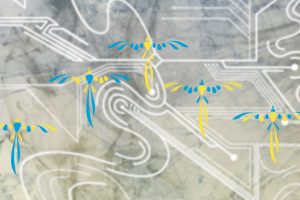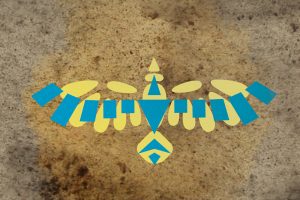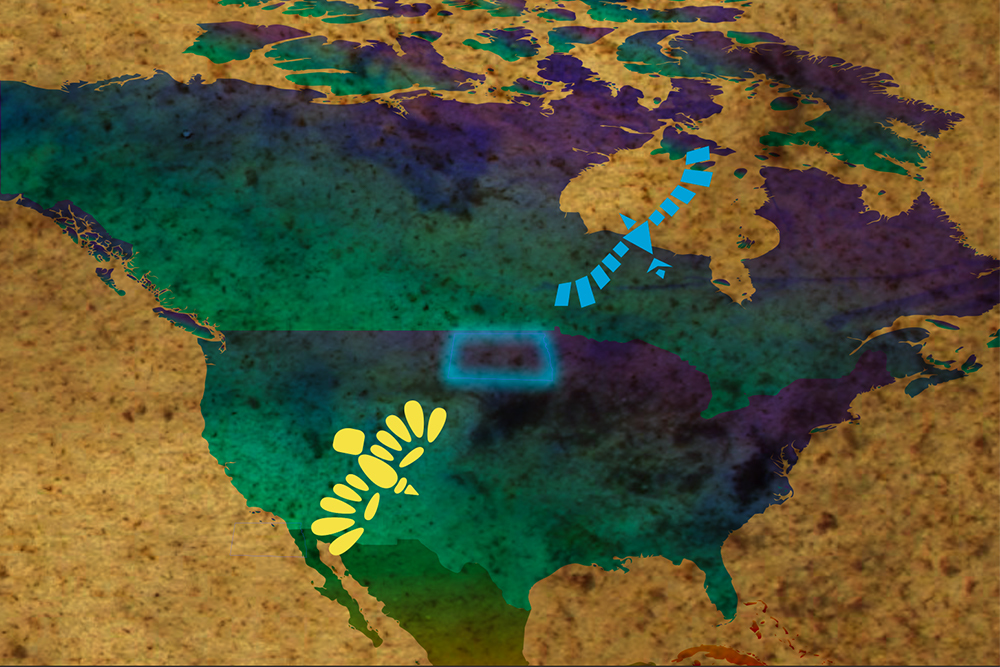Not just any class assignment gets a national audience – but that’s exactly what’s happening this fall when animation by Eastern Mennonite University visual and communication arts students will appear in a documentary being screened across the country.
The film, which has the working title The Eagle and the Condor – From Standing Rock with Love, features stories of peoples from South, Central and North America nations uniting at Standing Rock in North Dakota in 2016 and 2017 to resist the Dakota Access Pipeline. The movie and its trailer include animation created by ten students in Professor Jerry Holsopple’s course last year on After Effects motion graphics software.
A 55-minute screening copy of the film premieres on Indigenous People’s Day, Monday, Oct. 8, via Free Speech TV’s Facebook Live page. EMU students will join the premiere event and a panel discussion via Facebook. The 8 p.m. event is open to the public and co-sponsored by EMU’s Visiual and Communication Arts Department and the Center for Interfaith Engagement. For more information about the local screening, click here.
Indigenous groups and several other universities will also join, including University of Massachusetts – Boston, Augsburg College, University of Michigan, Northwestern University Center for Native American and Indigenous Research, Western Kentucky University, University of Vermont, Northland College and University of the Arctic.

The collaboration came about through Holsopple’s connections with director Paulette Moore, who taught at EMU from 2009-15. It “allowed the students to participate in something real,” Holsopple said. “They got feedback from directors – not just professors – and they know they have a much bigger audience.”
Now-seniors Riley Swartzendruber and Missy Muterspaugh were integral to the project. Given only a “vague idea” to start with, they developed the storyboard and animation based on the legend of the eagle and the condor, Muterspaugh said. She designed the art and the duo worked together on animation.
“Animating for the documentary gave the work a sense of place and reason to create and pool our efforts,” Muterspaugh said. “It gave me a good experience with working with a client with an idea in mind and seeing to create that vision with my own artistic spin to it.”
Working together required communication – “There were a few times we had to backtrack and rework the designs,” Swartzendruber said – as well as patience, when they needed feedback from Moore.
“I was pushed hard by this project,” Swartzendruber said. “After Effects is a complex platform to use.”

For Swartzendruber, the project was “more than a grade at the end of the course,” he said. “I felt a bigger sense of responsibility working on a larger scale project.” It was also meaningful because he began working on it just after returning from a semester-long cross-cultural in Guatemala and Colombia, where he had learned about indigenous cultures. Back in the classroom, he found that following his artistic and technical passions coincided with having “the chance to play a small part in supporting indigenous peoples.”
Muterspaugh, too, felt the greater significance of the project. “Working in collaboration with this documentary has given me an introspective look on how we still treat Native Americans and how quickly their stories are disappearing from their own native land,” she said. “I’ve thoroughly enjoyed learning a small piece of Native American culture while working on this project.”
The film’s trailer and more information about its premiere on Indigenous People’s Day, Monday, Oct. 8, can be found here.
